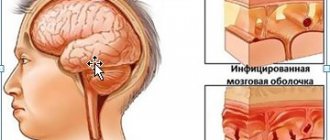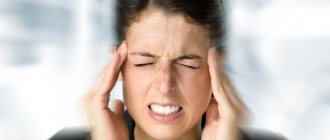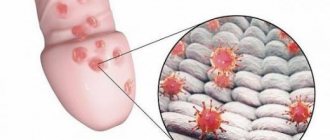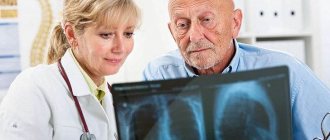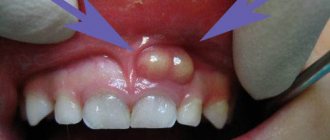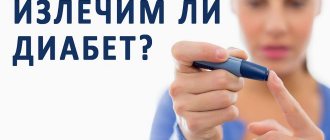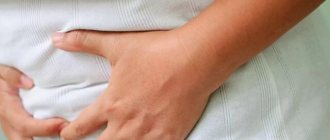Discomfort in the neck area may be a symptom of myositis.
Typically, the anomaly is caused by stressful situations, hypothermia, and prolonged exposure to an uncomfortable position.
In any case, a doctor should analyze the symptoms and treatment of neck myositis at home.
Pathogenesis of neck muscle myositis
Myositis of the neck muscles can occur in a person of any age. This uncomfortable condition most often appears due to a number of factors:
- staying in one position for a long time without warming up;
- exposure to cold, draft;
- viral diseases;
- infectious lesions;
- bruises, wounds and other injuries;
- taking medications;
- parasites;
- stress and overexertion;
- insect or animal bites;
- uncomfortable place to sleep;
- autoimmune diseases;
- complication after various diseases.
Causes
There are a number of factors that provoke the development of myositis. These include the following:
- Infectious diseases . The cause of the disease is viral infections, tonsillitis, and tonsillitis. The post-infectious type of pathology is a consequence of an imbalance of the immune system.
- Professional activity . This condition leads to spasm of the neck muscles. Musicians and office workers are more susceptible to pathology - people who sit in an uncomfortable position for many hours in a row.
- Traumatic injuries . Myositis can be the result of direct blows to the neck or arm fractures.
- Hypothermia, drafts . In this case, the patient thinks that he has a cold in his neck.
- Stress . The pathology is usually caused by chronic stress.
- Helminthic infestations . Infection with parasites provokes general intoxication of the body. In addition to internal organs, muscles also suffer.
- Diseases of the joints and spine . Typically, pain in the muscles of the cervical spine is provoked by intervertebral hernias, spondylosis, and osteochondrosis.
- Toxic effects . They are observed against the background of problems with metabolic processes that arise in the chronic form of gout, diabetes mellitus, and general intoxication of the body.
- Excessive alcohol consumption , cocaine addiction.
Sometimes the development of myositis is due to the influence of several factors at once. In teenage children, problems may appear after training or due to the stress of taking exams.
When to start worrying
If treatment for myositis is ignored, the following complications may develop:
- spread of pain to other organs of the body;
- transition to a chronic form;
- breathing problems;
- subluxation of the cervical vertebrae;
- the appearance of hernias;
- rash and swelling on other organs of the head;
- atrophy.
Clinical picture
Myositis is accompanied by characteristic manifestations that indicate the development of this pathology.
These include the following:
- Pain in muscle tissue. In this case, the discomfort is dull or aching in nature and increases with touching or movement.
- Feeling of weakness in the affected area.
- Inflammation. When it appears, swelling occurs in the affected area, a local increase in temperature, and skin hyperemia.
- General intoxication of the body. With the development of a purulent form of the disease, symptoms such as chills, a feeling of weakness, temperature fluctuations, and headaches occur.
- Discomfort in the shoulder blade, shoulder or back of the head. Typically, with cervical myositis, pain radiates to the listed areas.
If treatment of the pathology is not started in time, there is a risk of a serious deterioration in health. Due to spasm and inflammatory changes in the muscles, a characteristic distortion is observed.
As the disease progresses, it becomes more and more difficult to correct this disorder. Prolonged misalignment negatively affects the structure of the spine and causes a hernia.
Atrophy of muscle tissue, which often accompanies myositis, is also dangerous. In this case, the person cannot hold his head up, which negatively affects the quality of life.
Special exercises
It is recommended to perform special exercises during treatment of neck muscle myositis in order to speed up the healing process:
- tilting the head back, forward and to the sides;
- lifting the shoulders and smoothly lowering them;
- Rotate your head clockwise and in the opposite direction.
If the pain caused by myositis does not go away within three days, we recommend that you contact a medical facility to prescribe medication.
Symptoms of the disease
Painful points with myositis
The main symptom of myositis is pain, which appears within a few hours after the influence of one or another predisposing cause. First of all, local pain occurs, covering the back or posterolateral part of the neck. It is noteworthy that often its focus is located on one side. Turning or tilting the head can increase the intensity of pain.
The pain syndrome gradually irradiates to:
- area of the back of the head and crown;
- upper back;
- shoulder area;
- chest;
- tongue and ears;
- area between the shoulder blades;
- one of the upper limbs.
The patient tries to avoid movements of the head and neck, so as not to cause a new attack of pain. Sometimes a person is forced to hold his head in an uncomfortable position.
Against the background of the main clinical sign in adults, the following symptoms are expressed:
- muscle tension in the neck and shoulder girdle;
- swelling and redness of the skin in the problem area;
- the appearance of rashes on the neck, shoulders and upper extremities;
- increase in local temperature;
- restriction of movements;
- increase in the volume of regional lymph nodes;
- severe headache;
- pulsation in the temples and back of the head;
- exacerbation of pain at night, which leads to sleep disturbance or its complete absence.
In cases of the development of such a disease in a child, a more severe course and a clear manifestation of the above symptoms are noted. The clinic is often accompanied by an increase in temperature, even fever.
It is extremely rare that cervical myositis localized in the cervical spine becomes chronic, which is characterized by a wave-like course with alternating phases of exacerbation and subsidence of symptoms. In such situations, the symptoms will be presented:
- recurrent severe pain that occurs even with minor physical activity, a short stay in an uncomfortable position, or after each cold;
- constant muscle strain;
- significant limitation of motor functions;
- progressive muscle weakness;
- atrophy of damaged muscles.
Useful tips
In order to significantly reduce the risk of this disease, it is recommended to adhere to the following preventive measures:
- Dress appropriately for the weather and avoid hypothermia.
- Avoid being in a draft, strong wind, or under the cold air of a running air conditioner.
- When staying in one body position for a long time, do warm-up or exercises once every 60 minutes.
- Watch your posture and gait.
- Swimming or doing gymnastics to strengthen your neck muscles.
- Treat any diseases in a timely manner.
- Strengthen your immune system.
- Strengthen yourself and engage in moderate physical activity.
Dear readers, have you encountered similar painful sensations? What folk remedies and methods have you used to get rid of this discomfort? Share the most effective homemade recipes. We look forward to your feedback, recommendations and comments.
Therapeutic measures
How and with what to treat neck myositis is a question that arises for everyone who has had to face this problem. The pathology is diagnosed quite simply. In most cases, a general blood test is sufficient, which will reveal the inflammatory process occurring in the body.
In rare cases, electromyography or morphological examination of tissues is used. Myositis can also be detected using x-rays. The images will show damaged muscle fibers. This diagnostic method allows you to distinguish myositis from osteochondrosis.
Read how to treat back muscle myositis
Drug treatment
Treatment of neck myositis with medications is the most common method. However, according to doctors, treatment can only be effective with an integrated approach . It includes:
- bed rest,
- diet,
- taking medications, ointments, compresses,
- surgical intervention (in case of purulent myositis),
- Exercise therapy.
When myositis worsens, it is first necessary to relieve inflammation and eliminate pain. If the disease is infectious in nature, the specialist will prescribe antibiotics (“Meloxicam”, “Xefocam”, “Celecoxib”). Such drugs have a long period of action (12-14 hours), so they are used less frequently.
The doctor will also prescribe painkillers to relieve pain (“Nimesulide”, “Ketanov”, “Analgin”). They will help get rid of severe pain and temporarily make the patient feel better.
Quite effective in the treatment of myositis is the use of non-steroidal drugs . They allow you to normalize body temperature, block pain, and relieve inflammation. Such drugs have a number of contraindications, so the course of treatment should be short and can only be prescribed by a specialist.
Patients are prescribed ointments and compresses as warming medications. They are able to improve blood circulation, relieve inflammation, and eliminate pain.
The most commonly used ointments for neck myositis are “Apisatron”, “Voltaren”, “Diclofenac”. "Fastum gel" has anti-inflammatory and analgesic effects. You can relieve swelling and inflammation using Dolobene ointment.
Massage for neck myositis
Massage plays a special role in the treatment of myositis. This procedure is aimed at relieving the inflammatory process, reducing pain, and relaxing muscles. Massage combined with reflexology is very popular.
The massage begins with stroking. Then they move on to rubbing (they can be done in circular or linear movements). The movements begin with the pads of the fingers, gradually moving to the base of the entire palm. Rub the neck with slight pressure.
After rubbing, you can move on to kneading. A few minutes before the end of the session, a warming ointment (“Finalgon”, “Apisatron”) is applied to the sore spot and the sore area and around it are thoroughly massaged. Then wrap the neck with a dry, warm bandage.
Remember that in the acute period, a sore neck should never be treated with massage and alcohol compresses, as well as heat and physiotherapy!
Treatment with folk remedies
Very often there are cases when a person feels that the muscle in the neck is inflamed, but there is no time or opportunity to visit a doctor. In this case, many resort to the help of traditional medicine.
The most common methods of treating myositis at home are compresses and rubbing. A compress with cabbage leaves is effective. First, it is doused with boiling water and applied to the neck, wrapped in a scarf.
A compress made from crushed potatoes is also famous for its healing properties. The vegetable is boiled in its peel, crushed and applied to the sore spot. Keep this compress until it cools completely.
General symptoms
There are common symptoms that are present no matter what area is affected. Among them are:
- The inflamed area swells.
- Blood flow to the sore spot may increase, resulting in possible overflow of blood vessels.
- The affected area hurts, the discomfort intensifies if you feel the body or try to make any movements. It is possible to limit the motor activity of nearby joints.
- At night, the pain intensifies, despite the fact that the person is in a relaxed state. The body also reacts to changes in weather, such as rain.
- General muscle weakness appears, it is difficult for a person to move and keep the body in good shape.
- There is a feeling of muscle tightening when palpated, and a knot forms in the inflamed area.
- The condition may be accompanied by fever and headaches.
If myositis affects a certain number of muscle groups, then it is called polymyositis. If only one muscle is affected, then this is local myositis. Together with muscle tissue, nerve fibers (neuromyositis) or skin (dermatomyositis) can also be affected.
One of the most popular types of myositis is considered to be cervical myositis; it generally accounts for more than half of the cases, approximately in the region of fifty to sixty percent. After cervical myositis, the next place is lumbar myositis, which is considered one of the most common root causes of pain in the lower back.
At the moment, myositis is an office disease. That is, for representatives of the so-called sedentary work in this type of profession, the development of this pathology is much higher than for people with mobile work.
A very uncomfortable and forced position, for example, at a computer for six to eight hours with an air conditioner blowing behind him, is a fairly good reason for the development of cervical or lumbar myositis.
Other types of myositis are professional, for example, in pianists and violinists, this is due to constant and repeated tension in the muscles of the neck, hand and back.
It is believed that more than half of the residents of megacities suffer from different types of myositis.
Speaking conventionally, we can divide into exogenous (causes that arose outside the human body) and endogenous (causes that arose precisely inside the human body).
Endogenous causes are considered:
- Various types of infections - for example, enterovirus infections, typhoid and influenza;
- Various types of intoxication;
- Parasitic diseases, such as trichinosis or echinococcosis;
- Autoimmune diseases, for example rheumatoid arthritis or lupus erythematosus.
Exogenous causes are considered:
- Continuous muscle tension, for example, in musicians or athletes;
- Hypothermia;
- Injuries.
Once we have found out the reasons, it is worth finding out what the general symptoms of this lesion are in any location.
We will look at the general symptoms, and a little later we will try to analyze these symptoms separately for each localization of the inflammatory process.
Symptoms:
Swelling at the site of the inflamed muscle
Not always, but there may be hyperemia of the skin over the site of inflammation
Pain in a limited area, which intensifies when palpating the site of inflammation or moving the body in this area, movement in a nearby joint may be limited
The pain may intensify at night when at rest, and not just when moving. This can also happen when weather conditions change to damp and rainy weather.
Muscular weakness of the whole body increases, the patient finds it difficult to perform the most basic movements and keep himself in good shape
The muscle is firm to the touch and has a nodular formation at the site of inflammation
Possible presence of fever and headache
Now let's look in more detail at those inflammations, the localization of which occurs most often.
This type of inflammation is diagnosed quite often. The provoking factor is a characteristic inflammation of muscle tissue, which results in the following symptoms:
In case of inflammation of the chest muscles, in addition to the symptoms listed above, the patient’s condition may be aggravated by the following conditions:
- Swelling and pain often cause stiffness of movement and the inability to breathe deeply, this causes partial tissue hypoxia, and possible dizziness
- General weakness and weakness
- Complications in the form of a purulent process leads to an increase in temperature and the manifestation of symptoms of a general illness
Well, everyone has probably experienced this form of muscle inflammation. A common cause of this form of inflammation is exposure to low temperatures, especially in the autumn-spring season.
Symptoms of cervical myositis are typical:
Pain in the area of inflammation, which radiates to the back of the head and shoulder
The pain can even spread to the lower back
Headache
It's hard to lift your head from the pillow in the morning
In order to make an accurate diagnosis and not confuse cervical myositis with similar diseases, doctors recommend taking x-rays of the affected muscle area.
What is the difference between cervical myositis in children?
In young patients, the disease most often develops against the background of hypothermia or muscle strain. In adolescents, the first symptoms of pathology are usually diagnosed after the end of the school week or exam session.
Myositis of the neck in a child is accompanied by a sharp increase in temperature and severe headaches. In the absence of timely treatment, the disease progresses rapidly. The pathological process, as a rule, spreads to the adjacent muscles of the larynx and esophagus.
Diagnostics
Making a diagnosis is not difficult. It is enough to carry out the following examination:
- careful collection of anamnesis of the disease and identification of the cause of the pathological process;
- examining the patient and feeling the affected muscles;
- general blood analysis;
- blood for the presence of C-reactive protein;
- electromyography;
- in case of traumatic injury, an x-ray examination may be performed (according to indications);
- a biopsy of muscle tissue may be performed;
- consultation with an orthopedist, neurologist.


